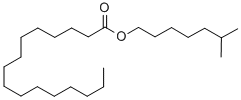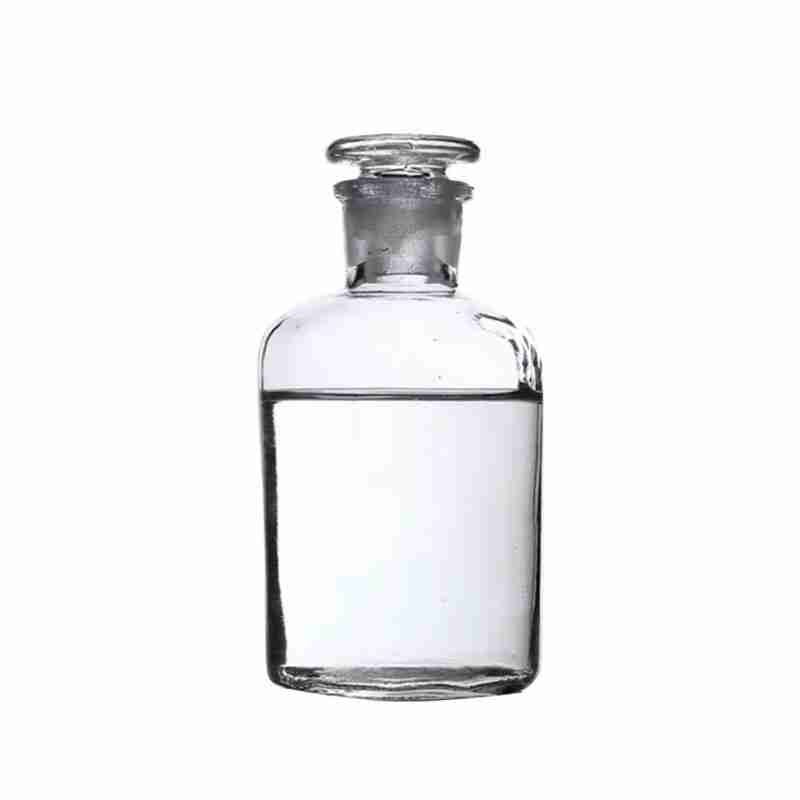Isooctyl palmitate CAS #1341-38-4
Isooctyl palmitate, also known as isooctyl palmitate, has the CAS number of 1341-38-4. It is a colorless to slightly yellow transparent oily liquid with the following properties and uses:
Properties: Good chemical and thermal stability, insoluble in water, soluble in conventional organic solvents and oils used in the cosmetics industry;
Uses: It is a widely used fine chemical product, commonly used in various human skin care products, and is an excellent skin softener. It has stable performance, is not easy to oxidize or produce odor, can make the skin soft and smooth without greasy feeling, has good permeability, and can be used as a good solvent for pigments in lipstick and mascara. It is often used in the formulation of skin cream, foundation cream, hair oil, eye shadow, lipstick, mascara, etc. It can also be used as a plasticizer for ethyl cellulose, nitrocellulose and polystyrene, and can also be used as an auxiliary plasticizer for polyvinyl chloride.
发送询盘
Isooctyl palmitate CAS #1341-38-4
| Isooctyl palmitate Basic information |
| Product Name: | Isooctyl palmitate |
| Synonyms: | ISOOCTYL PALMITATE;Palmitic acid, 6-methylheptyl ester;Palmitic acid 2-ethylhexyl ester;6-methylheptyl hexadecanoate;Isooctyl palmitate ISO 9001??2015 REACH;Isooctyl Palmitate 2-Ehp;High Quality CAS 1341-38-4 2-Ethylhexyl Palmitate with Best Price;Isooctyl hexadecanoate |
| CAS: | 1341-38-4 |
| MF: | C24H48O2 |
| MW: | 368.64 |
| EINECS: | 215-675-9 |
| Product Categories: | Cosmetics;bc0001 |
| Mol File: | 1341-38-4.mol |
 |
|
| Isooctyl palmitate Chemical Properties |
| Boiling point | 394.5-398.6?? at 102.15kPa |
| density | 0.855g/cm3 at 20?? |
| vapor pressure | 0.016Pa at 20?? |
| storage temp. | Sealed in dry,Room Temperature |
| form | Liquid |
| LogP | 3.763 at 25?? and pH5.97 |
| CAS DataBase Reference | 1341-38-4(CAS DataBase Reference) |
| Safety Information |
| MSDS Information |
| Isooctyl palmitate Usage And Synthesis |
| Chemical Properties | Clear liquid.Soluble in most organic solvents. Combustible. |
| Uses | Secondary plasticizer for synthetic resins, extrusion aid and plasticizer. |
- 2
- 2-diallylpent-4-en-1-amine
- 4
- 95-16-9
- Ammonium sulfamate
- Benzothiazole
- cas:67889-00-3ح2
- cas:83524-75-8 | pigment black 32
- cas:928836-00-4 | 2
- cas:932745-70-5 | 4
- Chemical Minerals
- Coconut diethanolamide
- Daily Chemicals
- discount
- for sale
- General pvc resin
- hexyl D-glucoside
- in stock
- Lauramidopropyl betaine
- LAURIC ACID MONOETHANOLAMIDE
- Petroleum Additives
- Plasticiser
- Ploymers
- price
- PVC
- quotation
- Raw Materal
- Remove term: Petroleum Additives Petroleum Additive
- SODIUM ETHYL 2-SULFOLAURATE
Related Products
Chemical Name: Zinc citrate
Synonyms: Zinc citrate trihydrate
CAS No.: 546-46-3
Molecular Formula: C6H8O7Zn
Molecular Weight: 257.5
Appearance: White powder
Ethylhexyl Palmitate is a skin-conditioning ester, derived from ethylhexanol and palmitic acid, that imparts moisturization and a smooth texture to cosmetic and personal care formulations. It is valued for its emollient properties, enhancing the sensory experience of skin care products.
Chemical Name: Ammonium Iron(II) Sulfate
Synonyms: Diammonium iron bis(sulphate); iron (ii) ammonium sulfate
CAS No.: 10045-89-3
Molecular Formula: FeH5NO4S
Molecular Weight: 170.95
1-Octanol, also known as Capryl alcohol or n-Octanol, is a clear, colorless liquid with a characteristic waxy odor. It is an alcohol with eight carbon atoms in its chain, making it a part of the aliphatic alcohol family. This compound is poorly soluble in water but is miscible with ethanol, diethyl ether, and chloroform . It has a melting point of approximately -15??C and a boiling point of around 196??C . 1-Octanol is used in the production of esters, plasticizers, and as a solvent or intermediate in the synthesis of various organic compounds. It also finds application in the fragrance industry as a fixative in perfumes and can be used in the formulation of flavor and scent compositions . It is important to note that 1-Octanol is flammable and should be handled with care, storing it away from sources of ignition and heat .
Chemical Name: Quercetin-3-O-sophoroside
CAS No.: 18609-17-1
Molecular Formula: C27H30O17
Molecular Weight: 626.52
Succinimide is a heterocyclic organic compound and an important industrial chemical. It serves as a key intermediate in the synthesis of various pharmaceuticals, agrochemicals, and other specialty chemicals. Known for its reactivity and versatility, succinimide is widely used in the production of succinic anhydride, a precursor to many polymers and plasticizers, highlighting its significance in the chemical industry.
POLY(VINYL CHLORIDE-CO-ISOBUTYL VINYL ETHER) is a copolymer that combines the properties of vinyl chloride and isobutyl vinyl ether. This polymer offers a balance of rigidity and flexibility, along with enhanced chemical resistance and durability. It is commonly used in the production of films, coatings, and adhesives due to its excellent barrier properties against gases and moisture, making it ideal for packaging and construction applications.
Tetraacetylethylenediamine is a fully acetylated derivative of ethylenediamine, offering a high reactivity as an intermediate in organic synthesis. Its unique structure makes it a critical component in the production of specialty chemicals and pharmaceuticals, ensuring a wide range of applications in the chemical industry.
Product name:Cyclopentane
Purity:96%
Appearance:White powder
Package:25kg/bag
Sample:Available
N,N-Dimethylaniline is an organic compound with amine and methyl groups attached to a benzene ring. It is a colorless liquid with a characteristic amine odor. This compound is primarily used as a chemical intermediate in the synthesis of dyes, pigments, and polymers. Its reactivity makes it a valuable building block in the production of various organic compounds, particularly in the pharmaceutical and chemical industries.
Chemical Name: Choline salicylate
CAS No.: 2016-36-6
Molecular Formula: C12H19NO4
Molecular Weight: 241.28
Appearance: Red-Brown Crystal
Silicones are a family of synthetic polymers known for their versatility and stability. They are heat-resistant, non-toxic, and have excellent electrical insulation properties. Commonly used in various industries such as construction, automotive, aerospace, and personal care products, silicones offer a wide range of applications from sealants and adhesives to lubricants and medical devices. Their resistance to extreme temperatures and weathering makes them a preferred choice for many high-performance applications.


















